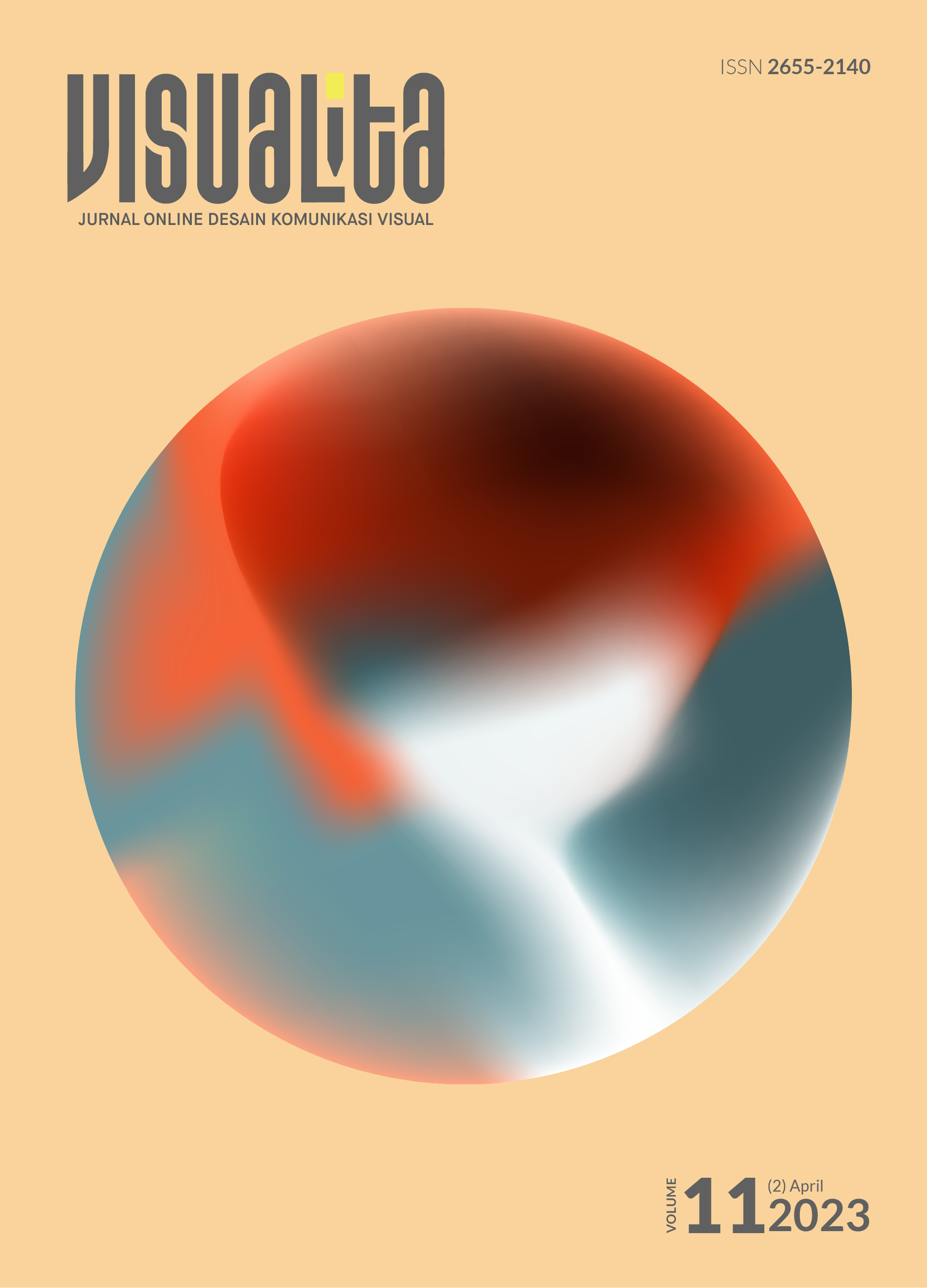Utilization of Parametric Design Technology in Designing Ceramic Products With Visual Traditional Pattern (Case Study: Best Western Premier La Grande Hotel)
DOI:
https://doi.org/10.34010/visualita.v11i02.8351Keywords:
ceramics, minimalist, modular, traditional pattern, parametricAbstract
The rapid increase in Indonesia's tourism sector has made many tourism-related business fields such as hotels to carry out various innovations in the creative field due to an increase in high competition. The habit of people who use hotels when traveling makes its function no longer only as an inn, but as part of traveling activities. The characteristics of the interior design and the elements in it greatly influence the interest of the people who prioritize aesthetics and comfort in choosing lodging. This research implements the Practice-led Research method with the flow of idea development, idea selection, data collection, and application of techniques as the process of applying the theories and methods chosen to create new products. The design of this ceramic product was carried out by adapting the basic form of the batik kawung pattern from the analysis of the character of the room in the case study and then implemented into a parametric design visual in the Grasshopper Rhinoceros 3D software. The output of this research is a recommendation for interior product design in the form of a wall hanging made of ceramic material that uses a modular concept with a visual approach to parametric design taken from the batik kawung pattern.
Downloads
References
Badriyah, S. (2010). Fenomena Budaya Desain Minimalis Masyarakat Kota. Fakultas Seni Rupa dan Desain Interior ISI Surakarta.
D.Vasilski. (2010). apanska kultura kao paradigma u formiranju minimalizma u arhitekturi. rhitektura i urnabizam.
Frazer, J. (2016). Parametric Computation: History and Future. Archit Des, 18-23.
Jinglong, L. (2018). The Application of Minimalism in Modern Packaging Design. Advances in Social Science, Education and Humanities Research.
Lagios K, N. J. (2010). Animated building performance simulation (abps)-linking rhinoceros/grasshopper with radiance/daysim. Proceedings of.
Nandang, D. (2010). PERSEPSI TREN ARSITEKTUR BANGUNAN MINIMALIS PADA DESAIN ARSITEKTURAL PERUMAHAN. Program Studi Teknik Arsitektur Fakultas Teknik Universitas Sultan Fatah (UNISFAT).
Nining, S. (2019). Aplikasi "HANACARAKA" Sebagai Media Pembelajaran Aksara Jawa Berbasais Android. Pendidikan Teknik Informatika dan Komputer Universitas Negeri Semarang.
Saha, T. (2020). CONCEPT OF MINIMALISM IN INTERIOR DESIGN WITH GREEN TECHNOLOGY. International Research Journal of Modernization in Engineering Technology and Science.
Sarwono. (2005). Motif Kawung sebagai Simbolisme Busana Para Abdi dalam Wayang Kulit Purwa Gaya Surakarta. HARMONIA: JURNAL PENGETAHUAN DAN PEMIKIRAN SENI Vol. VI No. 2.
Susanto, S. K. (1980). Seni Kerajinan Batik Indonesia. Balai Penelitian dan Pengembangan Industri Kerajinan dan Batik.
Wulandari, A. (2011). Batik Nusantara (Makna Filosofis, Cara Pembuatan dan industri batik. Yogyakarta: CV Andi Offset.
Yuswohady, ali, H., & Yulwardian, E. (2022). 10 Industry Megashifts 2020: Ten Megashifts in the 25 Hottest Industries Post-Pandemic. Indonesia Industry Outlook 2022 Conference.
Downloads
Published
Issue
Section
License
Authors who publish with Visualita agree to the following terms:
- Authors retain copyright and grant the journal right of first publication with the work simultaneously licensed under a Creative Commons Attribution-NonCommercial 4.0 International License.
- Authors are able to enter into separate, additional contractual arrangements for the non-exclusive public distribution and display of the journal's published version of the work (e.g., post it to an institutional repository or publish it in a book), with an acknowledgement of its initial publication in this journal.
- Authors wishing to include items (such as images or other media, or any creative works of others whether previously published or not) must contact the original copyright holder to obtain explicit permission to publish these items in Visualital. Writing permission should include: the title(s) of any copyrighted work, original place of publication if applicable, and an acknowledgement of having read Visualita copyright notice. Authors are responsible for obtaining this permission and keeping it in their own records for later verification.






